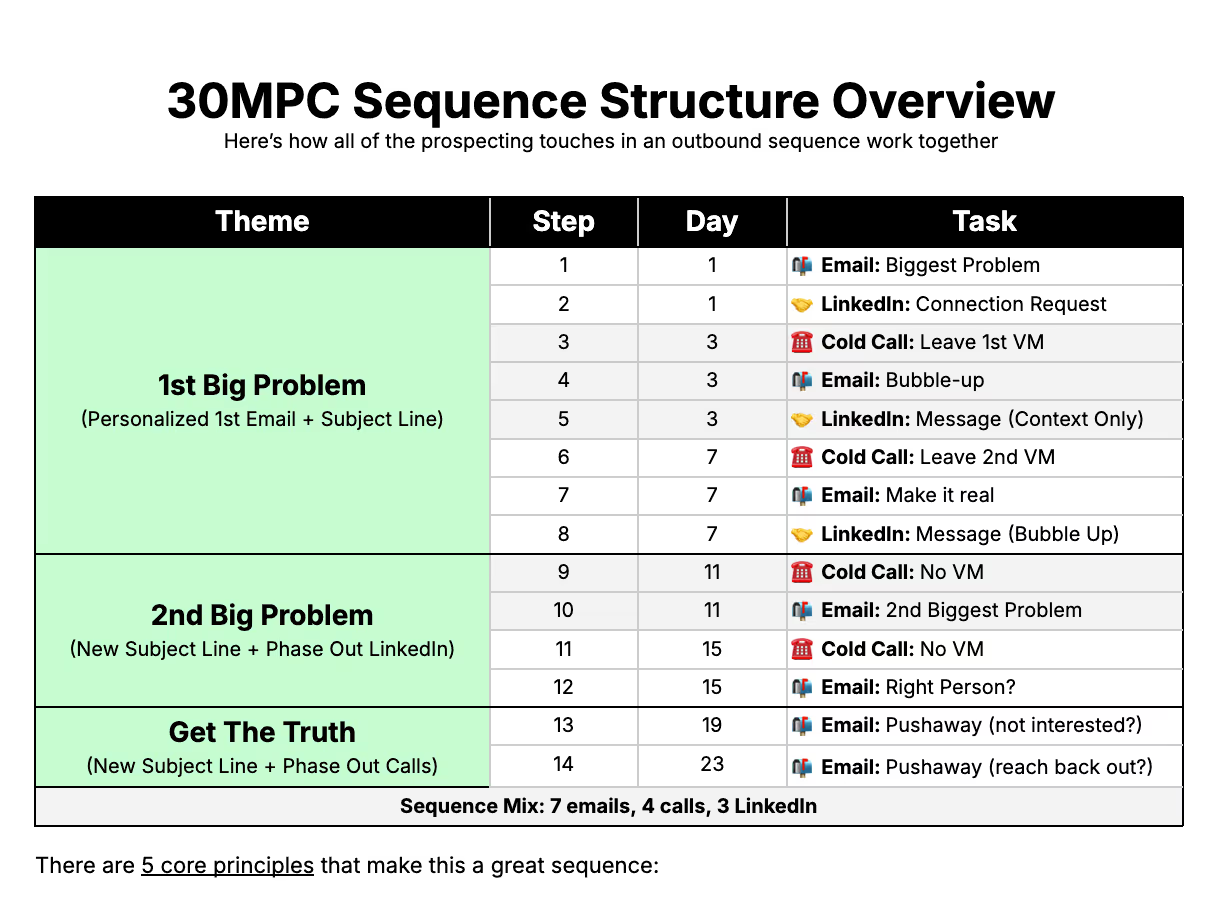-1.avif)
How to Run Pilots and POCs in Sales (While Avoiding Tirekickers)
When prospects can free trial literally anything nowadays from a Loom video subscription... to a Tesla... to a steak delivery subscription box...
Most pilots and POCs turn into "runaway trials" and never turn into closed sales.
When a prospect asks to "play around in the product" -- 9/10 times they have no idea what they're looking for, they get confused when they login, then abandon it entirely.
But if you set it up right, a POC can nearly guarantee a closed deal when it's done.
So I developed this 4-Step POC framework when I was VP of Sales at Pave to make sure our team wasn't chasing bad deals, then perfected it with my GTM advisory clients to get to an 80%+ close rate when we decided a POC was worth it:
- Avoid the POC entirely if you can use a custom demo
- Set Entry Criteria to confirm they can actually buy
- Set Exit Criteria to guarantee the close upfront
- Set a tight POC Scope to prevent runaway trials
Let’s get after it.
(PS: I'm going to use the terms "Proof of Concept / POC) and "Pilot" interchangeably as anything that involves your prospect trying out your product before paying you)
1: Avoid the POC if you can use a custom demo
The most common mistake reps make is signing up for POCs that never should've happened in the first place.
When a prospect asks you for a POC, always ask: What are you hoping to derisk?
From there, there are 4 "levels" to demoing your product that can derisk their concerns.
- Standard Demos use dummy data and focus on the features most relevant to them.
- Custom Demos use their data or custom configurations to make it real for them.
- Pilots / POCs let them log into the product and use it themselves.
- Trials / Opt-Out Periods (often paid) allow the prospect to roll out your product at a smaller scale or shorter time commitment before committing for the long haul.
9/10 times... a custom demo can solve for most functionality concerns and a customer reference can solve for most reliability/scalability concerns.
That said, there are a few real reasons to do a POC:
- Making your product feel real by putting it in their own hands with their data
- Proving that you're not hiding product gaps when you're not babysitting the demo
- Creating quantifiable results for a business case using their POC results
Rant over. If you've found that the POC is the right tool for the job, here's how to set it up.
2: Set entry criteria to confirm they can actually buy
Another common mistake sellers make is doing POCs when there are clear risks in the deal that need to be discussed first.
These are my "3 P's Entry Criteria" for a prospect to be eligible for a POC:
- Problem: Why let them "play around" with a tool that isn't solving a problem?
- Power: Why do a POC if power has no intention of buying this thing?
- Price: Why do a POC if we're completely out of their budget range?
Prospects often pushback on getting power involved before the POC begins. If your champion is hesitant to bring in power, you have to frame it in their best interest:
"Hey Nick, I completely get why you'd want to prove this thing out yourself before bringing it to your CHRO, Jane.
That said, I've seen this a million times and I know the CHRO always has opinions about compensation tool selection... and the last thing you want is to spend weeks of your team's time playing around in a product that you couldn't actually buy.
So could we get her onboard so that we run the right POC together?"
From here, you want to explicitly confirm what happens next if the POC goes well. That might mean proceeding to a business case, presentation to a CFO, or even directly into vendor of choice / vendor review depending on your sales cycle.
3: Set exit criteria to guarantee the close upfront
Many prospects enter POCs with either murky exit criteria ("we'll more forward if we like it") or with massively unreasonable expectations ("I want win rates to improve by 10%).
You have to set realistic POC exit criteria that you know you can win upfront.
Using an example with my client, Covey (AI bot that can screen 1000 resumes in a click):
- It'd be unreasonable to expect a 10% improvement in time-to-hire. While that could happen if they became a customer... they literally would have to source, screen, and interview candidates over months to see the results.
- But it'd be totally fair to ask us to identify 10 great resumes in a stack of 1000. We can do this in a single day to prove that we can cut the sourcing process to a fraction of its initial time without waiting for you to interview every single candidate.
Force your prospect to agree to 2-3 controllable POC exit criteria and ask: If we achieve this exit criteria, do you see yourself moving forward?
4: Set a tight POC scope to prevent runaway trials
Now that you have exit criteria, scope your POC to achieve it as efficiently as possible:
- Set a scope: Try to limit the POC to a small user group because big groups struggle with adoption. For Covey, that's usually a Head of Talent + 3 recruiters in 1 function (ie: 3 technical recruiters, or 3 GTM recruiters).
- Set a timeframe: We typically recommend a 1-2 week long POC, max. If you need longer, that means your exit criteria might not be realistic or you need to consider a paid product trial (which is a different can of worms reserved for bigger deals).
- Assign POC milestones: Don't just let them "play around in the product" -- assign workflows for them to do. For us, that usually means picking 1-2 open roles, running the bot on those roles, and then shortlisting a total of 10 candidates per role.
The issue is most prospects won't complete the POC if left alone. They'll login once, get frustrated with the configurations, then asking to extend their trial for another week at the end of the POC period because they got distracted with the rest of their job.
So set meetings for every potential dropoff point to keep your POC on the rails:
- We set an integration meeting where we literally integrate their recruiting systems, and job postings live so they don't get stuck on the initial technical setup.
- We setup a candidate screening check-in as a deadline for them to enter their ideal candidate criteria and come with their 10 screened candidates.
- We set a final POC results meeting where we discuss the results of the trial, including the # of candidates screened, which ones they would've missed because they couldn't get to them all manually, and how long it would've taken without us.
And if you've done it right, the debrief should be easy: Rattle off the exit criteria you agreed upon, rattle off how you achieved it (because you knew you could control it)...
And then rattle off the contract. (or business case, or whatever).
***
That's a wrap folks! If you want more, this was the best POC interview we've ever had on 30MPC (an oldie but goodie with our friend Adam Ochart... who I unintentionally also mentioned last week when talking about AE interview processes. Guess he's that good).
Check it out and let us know what you want us to cover in the next noozy 👊

















